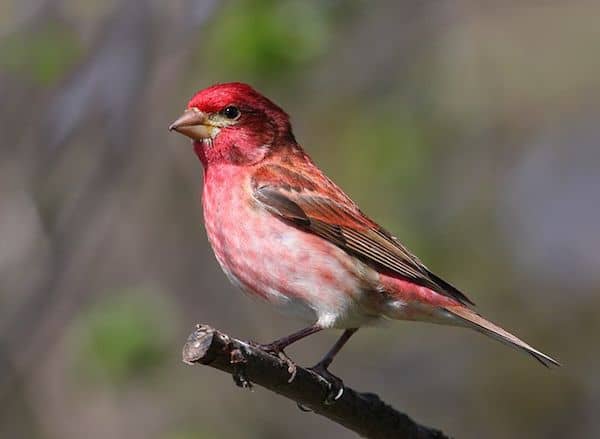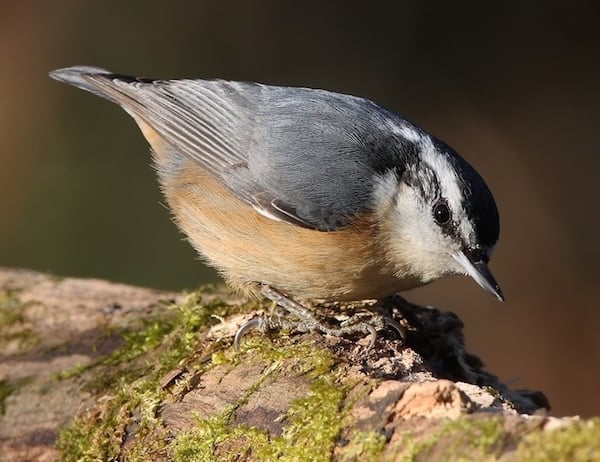Look For
The male purple finch is washed with a raspberry red (not purple), as if he’d been dipped upside down in raspberry juice. Unstreaked white flanks, belly, and wings help separate him from the similar male house finch. The female is covered in short, dark brown streaks, looking cleaner overall than a female house finch. The purple finch also has a larger bill, which gives it a larger-looking head. Check out the female purple finch’s white eye line and dark bandit mask. By contrast, the female house finch looks plain-faced. Purple finches are about six inches in length.
Listen For
The bright, cheery song is a fast series of hoarse whistles: treedle-wheedle-treedle-turtle-wheedle-breer!!
Find It
Purple finches are conspicuous birds, perching in treetops and calling and singing frequently. Flying birds can be easily located by the flight call (pit-pit!). During breeding season, they prefer moist coniferous forests. During the winter, you can find them throughout the eastern United States and southern Canada as well as flatter areas in the West.
Feeding Behavior
You can find purple finches chomping on seeds, buds, blossoms, nectar, and fruit on trees. The occasional insect winds up in the finches’ diet as well.
Nesting Behavior
Both male and female participate in picking out a nest location, which usually is out on a conifer tree branch. Similar to other finches, the purple’s nest is composed of twigs, sticks, and roots and then lined with fine grasses and animal hair. Females lay about four eggs per clutch and incubate them for almost two weeks. Baby purple finches fledge 13 to 16 days after hatching and continue to be fed by their parents.
Wow!
Huge influxes of purple finches move south in fall and winter when the natural food crop (seeds of pines, spruces, and other trees) is poor in the North.
Hear the purple finch:




